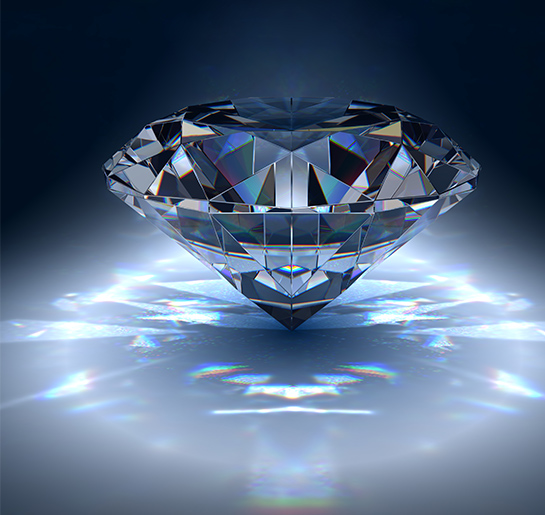
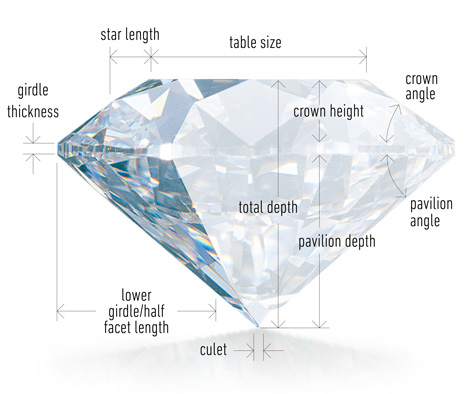
The cut of a diamond is not only crucial for obtaining the ideal diamond’s shape but it also decides how successfully does the diamond restore the light back to a viewer’s eye. An inadequately cut diamond will lack color and clearness and will seem dull and unattractive.
Whereas, well-tailored diamonds seem more exclusive and magnificent. They also seem bigger than other diamonds of similar carat weight that are inadequately cut. Well-cut diamonds are regarded as the “flawless” diamond because they have both precise measurements and distended brightness.
A perfectly cut diamond is round that is cut to perfection or a brilliant princess cut, it has a fine symmetric design and a dazzling polished look. The ideal cut diamonds deliver brightness throughout the table and crown of the diamond, refracting light. Dazzling Diamonds offers a precious collection of finely cut, flawless diamonds.
A well-cut diamond has three important properties - brilliance, dispersion, and scintillation. Brilliance is the light that is reflected off the diamond. Dispersion is the flashes of spectral colors when the light travels through the stone, and the sparkle or the play of colored flashes when the diamond is viewed in motion is scintillation.

Diamonds come in all shades. It is evaluated on a D-Z scale with five general classes (dry, close drab, blackout, light and light). The most common color in a diamond is yellow, caused by the nitrogen component. Based on the diamond colors, diamonds are categorized as -
These diamonds fall in the lackluster range and are one of the most uncommon and significant of the rest on the color scale. D/E colors stones have no color, whereas F stone will have a very minute measure of color when kept under a microscope by the gemologist.
These are the diamonds that seem dreary when seen in the face-up position, but still, show a minute amount of color when you see it against a white foundation. Once the diamond has been produced, the amount of color will be unnoticeable to an untrained eye.
Diamonds inside this classification may show a slight color when seen in the face-up position, this is another option for people who find it difficult to find colors.
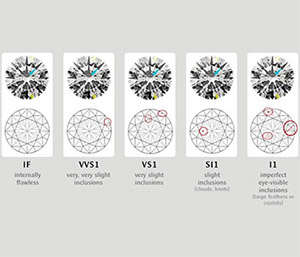
It is crucial to select a diamond that is not mixed with any elements that might affect the sturdiness and general magnificence of the diamond. If you need to be ensured that your diamond will stay spotless of “eye-noticeable” considerations, choose diamonds that are higher than “VS2”. One way to be ensured is by looking for SI quality standards. But, it is still recommended to have the diamonds evaluated by Dazzling Diamonds’ team of professional gemologists. This way, you can stay guaranteed that the diamond remains clear and magnificent to the exposed eye at all times.
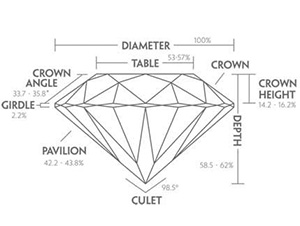
Carat is the term used for defining the weight or heaviness of a diamond. The carat weight corresponds to the measure of a diamond. When the rough diamonds are shaped and polished into polished diamonds, about ⅔ of the aggregate carat weight can be lost. Since the high caliber unpleasant pearls are discovered less in comparison to the high caliber, little rough diamonds, the two-carat diamonds cost more than two one-carat diamonds of similar compositions.
In the US, the majority of diamonds that are used as gems and traded as free diamonds weigh less than ½ carat.
A diamond will increase in weight quicker than it expands in “face-up” width.
For example, if a one-cut carat diamond measures 6.5mm in width, a diamond twice its weight might be just 8.2mm wide.
However, determining which carat weight is the right one for you depends on individuals and their spending budgets.It is crucial to note that while the carat weight has a significant impact on the cost of the diamond, the diamond cut and breadth are important to consider.
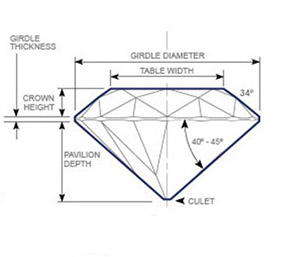
Every diamond is unique in its way, but each of them does share some similar highlights. The brightness, scattering, extents, and luster of a diamond depend on its fundamental structure. Every diamond has a distinct name, and based on how every part adds to the diamond; you will be able to select your ideal diamond. There are eight principal parts in every diamond - Diameter, Table, Crown, Girdle, Pavilion, Depth, and Culet.
Purchasing a diamond is a lifelong dream for many. Once you set your mind to buying an ideal diamond, make sure to be well-versed with the fundamental diamond structure. This will show you a diamond’s intense complexities, helping you choose the right diamond.
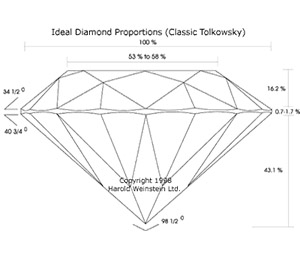
A diamond’s proportion depends on three factors -its splendor, scattering, and glimmer. When light strikes a diamond’s surface, it either enters the diamond or reflects off its table. The light reflected is called diamond’s splendor - it is the shimmering white light that people see when gazing at the stone. The light that enters the diamond is isolated into flashes of color. This phenomenon is known as scattering.
Due to scattering, a partition of white light is spread into hues, known as a flame. And lastly, glitter is the color flash that a person witnesses while rotating the diamond.
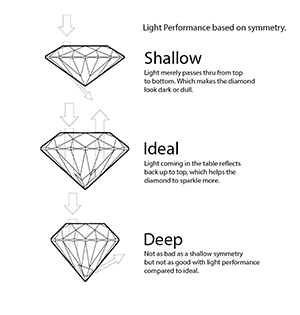
A diamond’s symmetry is a result of its shape and features. Symmetry plays an imperative role in diamonds with high clearness. Even though a diamond’s symmetry plays a minor role in affecting the appearance that the exposed eye sees, symmetry plays a huge role.
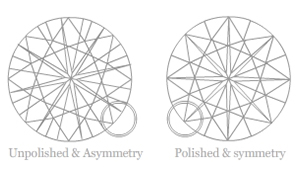
The better the diamond polish, the better the light goes through the diamond. It is a crucial step in deciding a diamond’s splendor. If you are purchasing a diamond, you must pick one that has an excellent polish grade, and its research facility is ensured. Necessarily, diamonds with a poor polish are less attractive because minimum polish obscures the stone’s surface, lessening the measure of light entering or leaving the diamond.
A diamond’s polish is evaluated like its symmetry. As per the GIA, AGS, or IGI reports, the evaluations range from Excellent, Very Good, Good, Fair, or Poor.
| EX or E | Excellent, Flawless at 10X amplification |
| VG or VGD | Very Good, Extremely hard to situate under 10X amplification |
| F, FR, FA | Fair, Noticeable under 10X amplification |
| PR, PO, P | Poor, Easy to see under 10X amplification/Visible to unaided eye |
| VP, VE | Very Poor, Relatively simple to see with the unaided eye |
| EX or EP | Extremely Poor, Obvious to see with unaided eye |
An unaided eye will not be able to differentiate between these distinctions. It is just to amplify that the differences differentiate between different diamonds. A polish evaluated as Poor (PR) demonstrates that the flaws in the polish can be noticed by an exposed eye, compromising the diamond's general excellence.
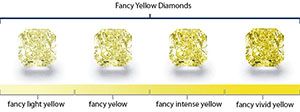
Go through the three major criteria for deciding on a diamond's color and intensity.
A diamond's profitability depends on color power. Different color diamonds depend on blackout, light, extravagant light, favor extreme, favor dim.
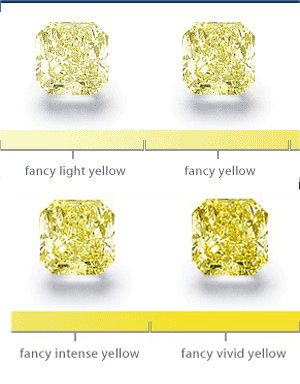
Orange diamonds contain dark, yellow, or pink tints and tones. Discovered at the Argyle mine in Australia, and South Africa. These diamonds are reviewed on a color chart, including extravagant orange, bold orange, clear orange, profound orange, and dim orange. If a diamond is to be viewed as orange, it must not contain any dark color, which is why orange diamonds are very uncommon.
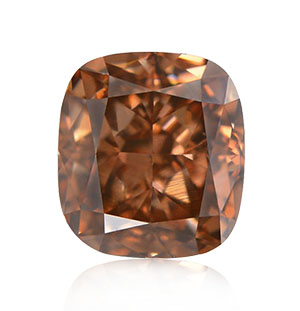
If you are looking for a different option other than the standard white diamond, dark-colored, or brown diamonds, make a decent option. Brown diamonds are a result of an adjustment in its atomic structure.
These dark diamonds are also known as cognac diamonds, and the light-colored ones are known as champagne diamonds.
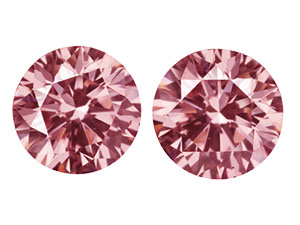
Pink diamonds are absolutely the most popular extravagant diamonds available. These are the most significant diamonds that you can purchase. Pink diamonds contain light Pink, extravagant light pink, extravagant Pink, extravagant exceptional Pink, extravagant distinctive Pink, and profound pink tints.
The reason behind its pink tits is its haziness. Even though the real reason behind this tint is still a mystery, many researchers predict that it might be due to a nuclear level cross-section imperfection that ingests light and throws a pink shade.
The extremely immersed pink and purple diamonds are the most uncommon diamonds. This is the reason why these diamonds cost a huge number of dollars per carat.
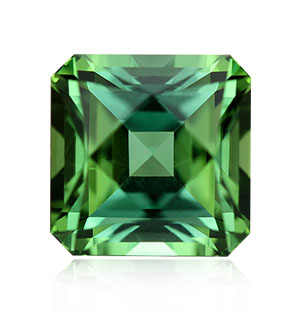
These are the second rarest color diamonds in the world, after the pink diamonds. Because green is a result of blending blue and yellow, green diamonds run from blue-green to yellow-green.
A few green diamonds show hints of dark or darker green too. Natural green diamonds that have no different hue is extremely uncommon and significant. The scale for green diamonds range from blackout green, light green, extravagant light green, extravagant green, extravagant extreme green, extravagant dull green, extravagant dark green, and fancy distinctive green.
The reason behind a green hue is that they are formed over millions of years after they have been infused by beta and gamma rays.
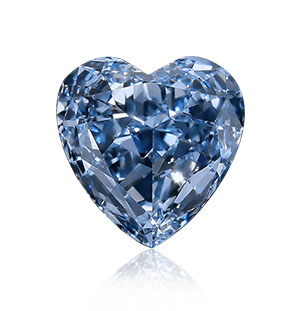
These are among the rarest kinds of colored diamonds, and so, they are highly significant. These diamonds extend from light blue to dim blue. The scale for blue diamonds ranges from blackout blue, light blue, extravagant light blue, extravagant blue, extravagant extraordinary blue, extravagant dull blue, extravagant dark blue, and fancy striking blue.
There are other types of blue diamonds that have hues of green or dim. The reason behind the blue thing is the component boron, trailed by hydrogen and nitrogen. These diamonds are made when boron ends up in the diamond's grid. It consists of minor nitrogen pollutants.

A diamond’s proportion depends on three factors -its splendor, scattering, and glimmer. When light strikes a diamond’s surface, it either enters the diamond or reflects off its table. The light reflected is called diamond’s splendor - it is the shimmering white light that people see when gazing at the stone. The light that enters the diamond is isolated into flashes of color. This phenomenon is known as scattering.
Due to scattering, a partition of white light is spread into hues, known as a flame. And lastly, glitter is the color flash that a person witnesses while rotating the diamond.

A diamond’s symmetry is a result of its shape and features. Symmetry plays an imperative role in diamonds with high clearness. Even though a diamond’s symmetry plays a minor role in affecting the appearance that the exposed eye sees, symmetry plays a huge role.

The better the diamond polish, the better the light goes through the diamond. It is a crucial step in deciding a diamond’s splendor. If you are purchasing a diamond, you must pick one that has an excellent polish grade, and its research facility is ensured. Necessarily, diamonds with a poor polish are less attractive because minimum polish obscures the stone’s surface, lessening the measure of light entering or leaving the diamond.
A diamond’s polish is evaluated like its symmetry. As per the GIA, AGS, or IGI reports, the evaluations range from Excellent, Very Good, Good, Fair, or Poor.
| EX or E | Excellent, Flawless at 10X amplification |
| VG or VGD | Very Good, Extremely hard to situate under 10X amplification |
| F, FR, FA | Fair, Noticeable under 10X amplification |
| PR, PO, P | Poor, Easy to see under 10X amplification/Visible to unaided eye |
| VP, VE | Very Poor, Relatively simple to see with the unaided eye |
| EX or EP | Extremely Poor, Obvious to see with unaided eye |
An unaided eye will not be able to differentiate between these distinctions. It is just to amplify that the differences differentiate between different diamonds. A polish evaluated as Poor (PR) demonstrates that the flaws in the polish can be noticed by an exposed eye, compromising the diamond's general excellence.

Every Diamond comes in a wide range of shapes. Every diamond has its own distinct features and qualities, so researching and attaining knowledge about the different shapes is crucial. Dazzling Diamonds offers a wide range of quality ensured diamonds to satisfy all preferences.
An Asscher cut diamond has a slightly different top, side, and bottom view, portraying a very distinct and unique diamond shape. Since it radiates immense shine and luster, its optical illusion is called ‘Hall of Mirrors’ effect; it exhibits 74 facets and therefore, it is known as octagonal step cut by GIA.

These are the most commonly preferred diamond styles for decades. It exhibits 58 facets divided evenly amongst its crown, pavilion, and girdle in a standard ratio between 1.00 and 1.02. Embedded in notable magnificent designs, it strikingly reflects the perfect white light called brilliance.

The name cushion cut diamond is derived from its cushion like shape, with soft edges. This diamond is greatly becoming popular in recent years because of its cushion or a pillow resemblance. People are increasingly inclined towards this type for their engagement rings because this type of diamond shape offers a better carat value.
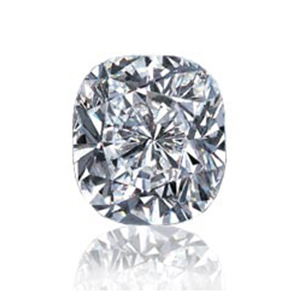
Emerald diamonds are regarded as the most unique diamond shape in the world because of their shape, cut, and clarity. They step cut showcasing its narrow and long facets perfectly. This shape also creates several flashes of light within each facet.
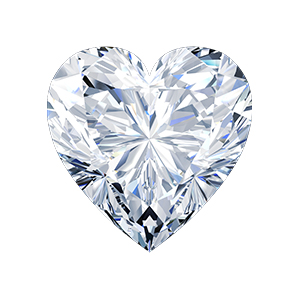
This rare and symbolic cut design is popular among all romance lovers out there. The most important thing to consider when purchasing a heart shaped diamond is the quality of the curved edge because it will determine the sparkle and luster that the diamond reflects. It usually showcases 56 to 58 facets.
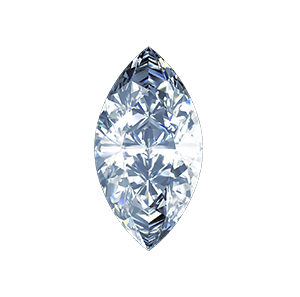
Known for its unique “navette” oval shape, Marquise DIamonds exhibit 56 to 58 facets. Resembling a little boat, they are often cut with a French tip used to carve Heart and Pear shapes. The shape of the marquise diamond casts a shadow over the central facets of the stone, diffusing better light in that area.
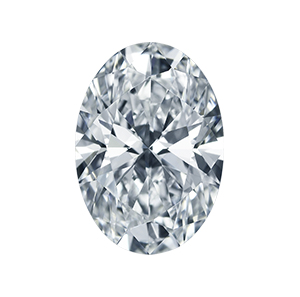
The oval diamonds are a modified version of the traditional round cut diamonds, providing magnificent brilliance and little extra flair. It showcases 58 facets and a ratio between 1.33 and 1.66. When the light passes through it, it casts a shadow across the middle facets of the stone leading to a ‘bow tie effect’.
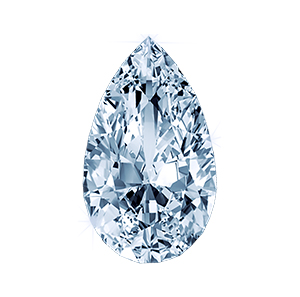
The pear shaped diamonds have a unique, flamboyant and flattering design with curved ends and a single point. Originating in the 15th century, it usually showcases 56 to 58 facets. This diamond is a perfect-hybrid of the round and marquise diamonds.
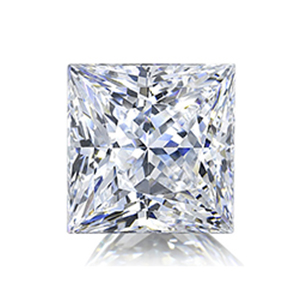
Technically known as ‘square modified brilliant’, princess cut diamond is a common shape that people prefer for engagement rings. Forming a beautiful glistening reflection, It looks rectangular when seen from above, and when viewed from the sides, it looks like an inverted pyramid with four slanting sides.
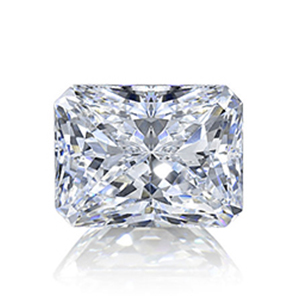
A radiant cut diamond has a flamboyant and radiant look and is an ideal diamond engagement ring as it is a hybrid of the brilliant emerald cut and the sparkling round diamonds.
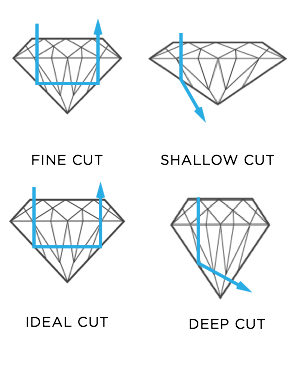
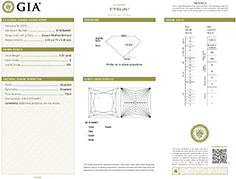
A diamond certificate is issued by the independent gemologist laboratories authenticating the details of a diamond, including the color grade, the carat weight and measurements, cut and lucidity review. One must never purchase a diamond without a diamond certificate. The most trusted labs that issue the diamond certificate are Gemmological Institute of America (GIA). the American Gem Society (AGS) and the International Gemological Institute (IGI).
The cost of the diamond depends on the 4C’s - Color, Clarity, Cut and Carat. These four qualities together decide the quality and estimation of a diamond. Normally, carat is the most critical factor, but color, cut and clarity have a more lasting impact on the life of a diamond
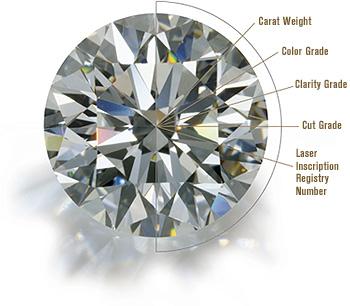
Everyone wants their diamond to be special, unique, and alluring. How to make sure that you purchase a diamond that you were looking for? Buying a diamond demands a massive sum of money. So it would be best if you did complete research on diamonds before you make a buying decision.
Here are four classes (or the 4 C’s) that you must consider while searching for that perfect diamond.
Apart from the 4Cs, the shape of a diamond has a significant role in influencing the customer’s buying decisions. Shapes like round, princess, emerald, Asscher (or square), oval pear, heart, pad formed, marquise, brilliant are the most common types of diamond shapes.
Make sure to select a diamond before buying a wedding band, not the other way round. This is because the shape of the ideal diamond influences the shape of a wedding band.